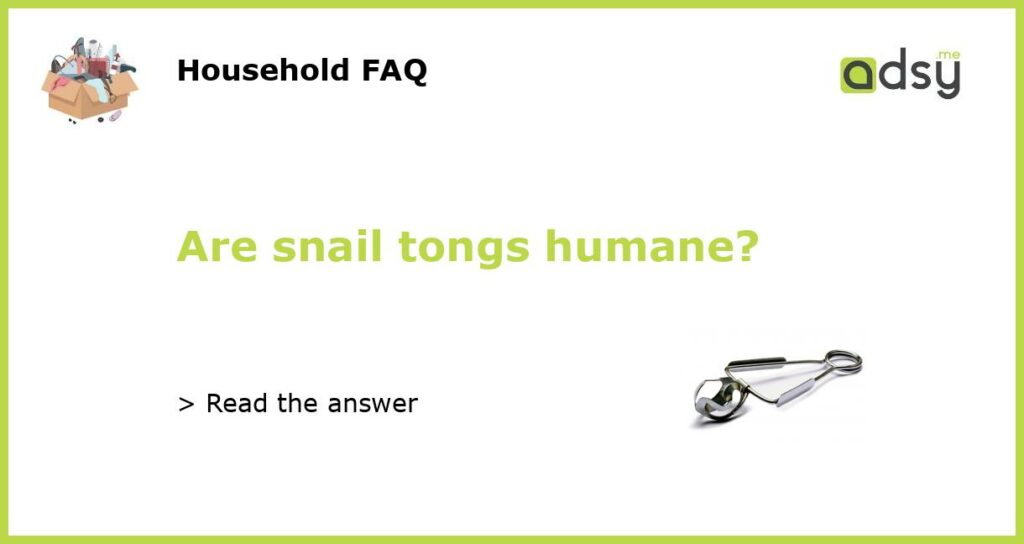Snail Tongs: A Cruel Practice?
Snail tongs, also known as snail pincers or snail tweezers, are a tool used by some individuals to handle snails. These small, hinged devices allow the user to securely grip a snail without harming it. However, the question arises: Are snail tongs humane?
Understanding Snails’ Sensitivities
Before delving into the ethics of using snail tongs, it is essential to understand the sensitivities of these creatures. Snails possess a sensitive body structure and can experience discomfort when handled improperly. They have a delicate shell, a soft body, and are susceptible to injuries when subjected to forceful gripping or squeezing.
The Case for their Humane Use
Proponents of snail tongs argue that when used appropriately, these tools can be a humane way to handle snails. Snail tongs allow individuals to move snails without touching them directly, minimizing the risk of accidental injury. By using the tongs, snail enthusiasts or researchers can observe or study these creatures without causing unnecessary harm.
Furthermore, snail tongs can be an effective tool for those who care for snails as pets. Some species of snails are sensitive to the oils and chemicals on human hands, which can be harmful to their health. Using snail tongs can prevent these potential dangers and ensure the wellbeing of the snails.
Potential for Harm and Accidental Injury
However, despite arguments in favor of their humane use, snail tongs can still pose a risk to these delicate creatures. If not used carefully, the pinchers of the tongs can cause injury to the snail’s body or shell. Snail enthusiasts must consider the potential harm they may cause before using these tools, particularly if they are inexperienced in handling snails.
Another risk associated with snail tongs is the discomfort they may cause the snail. Even with careful handling, the act of gripping the snail may induce stress or fear in the creature. While it may not physically harm the snail, the emotional impact is difficult to ascertain without further research on snail behavior and stress responses.
Alternative Methods for Handling Snails
Given the potential risks and uncertainties surrounding the use of snail tongs, there are alternative methods that may be worth considering. One option is to use a soft brush or cloth to gently guide the snail, rather than physically gripping it. This method can minimize the risk of injury and potential stress to the snail, while still allowing for safe handling.
Another alternative is to create a safe, natural environment for the snails, where they feel comfortable and can be observed without the need for direct manipulation. This can be achieved by providing a suitable enclosure with appropriate temperature, humidity, and food sources. By observing the snails in their natural habitat, researchers or enthusiasts can avoid unnecessary handling altogether.
The Importance of Research and Ethical Considerations
The question of whether snail tongs are humane ultimately comes down to individual perspectives, the intended purpose, and the careful consideration of the risks involved. Further research on snail behavior, stress responses, and the impact of different handling techniques could provide more insight into the ethical dimensions of this issue.
Ultimately, it is crucial to prioritize the welfare and wellbeing of the snails above all else. By considering alternative methods and practicing caution when using snail tongs, individuals can minimize the potential harm and make more informed decisions regarding the ethical treatment of these delicate creatures.






